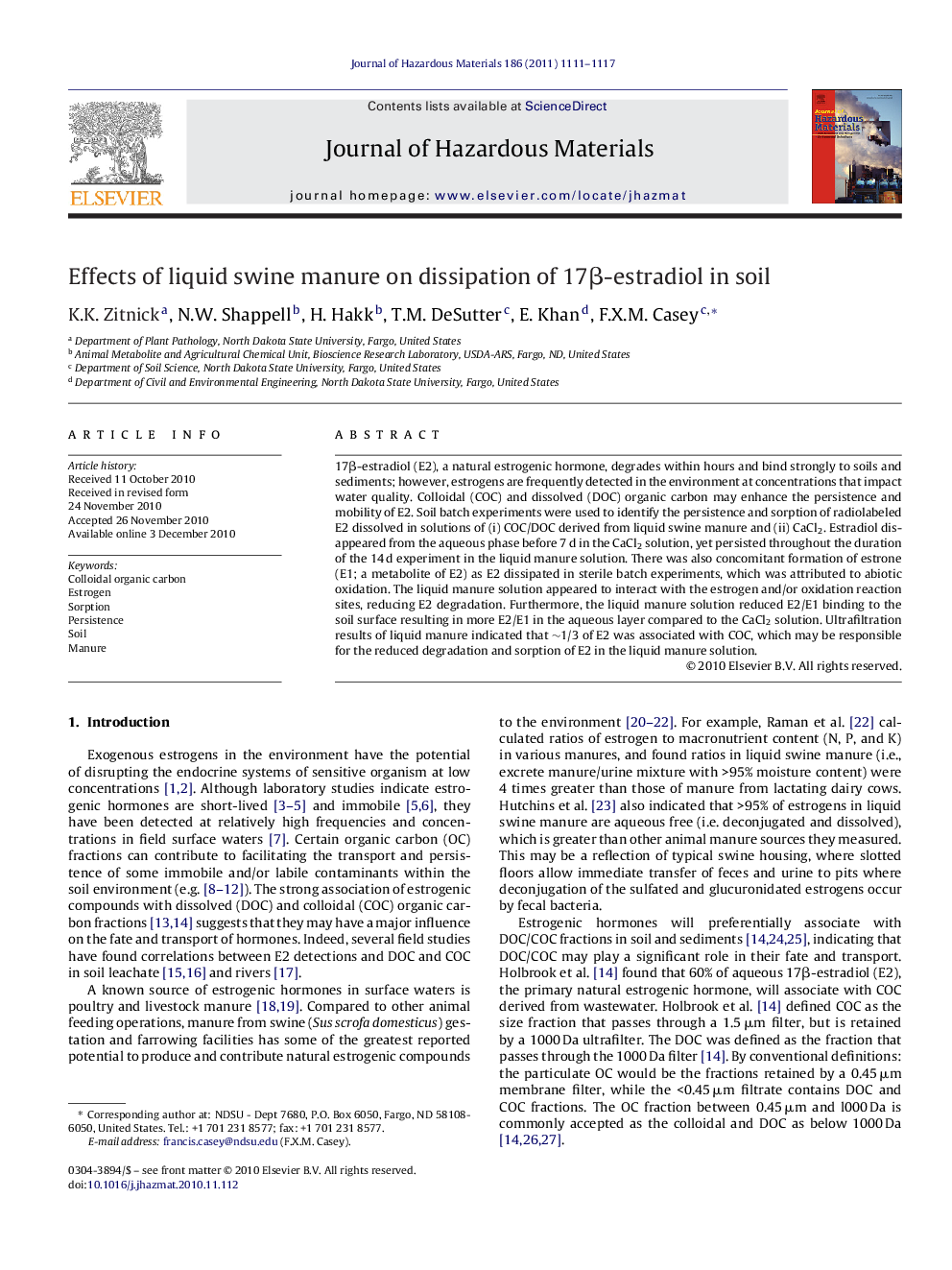| Article ID | Journal | Published Year | Pages | File Type |
|---|---|---|---|---|
| 6972651 | Journal of Hazardous Materials | 2011 | 7 Pages |
Abstract
17β-estradiol (E2), a natural estrogenic hormone, degrades within hours and bind strongly to soils and sediments; however, estrogens are frequently detected in the environment at concentrations that impact water quality. Colloidal (COC) and dissolved (DOC) organic carbon may enhance the persistence and mobility of E2. Soil batch experiments were used to identify the persistence and sorption of radiolabeled E2 dissolved in solutions of (i) COC/DOC derived from liquid swine manure and (ii) CaCl2. Estradiol disappeared from the aqueous phase before 7 d in the CaCl2 solution, yet persisted throughout the duration of the 14 d experiment in the liquid manure solution. There was also concomitant formation of estrone (E1; a metabolite of E2) as E2 dissipated in sterile batch experiments, which was attributed to abiotic oxidation. The liquid manure solution appeared to interact with the estrogen and/or oxidation reaction sites, reducing E2 degradation. Furthermore, the liquid manure solution reduced E2/E1 binding to the soil surface resulting in more E2/E1 in the aqueous layer compared to the CaCl2 solution. Ultrafiltration results of liquid manure indicated that â¼1/3 of E2 was associated with COC, which may be responsible for the reduced degradation and sorption of E2 in the liquid manure solution.
Related Topics
Physical Sciences and Engineering
Chemical Engineering
Chemical Health and Safety
Authors
K.K. Zitnick, N.W. Shappell, H. Hakk, T.M. DeSutter, E. Khan, F.X.M. Casey,
